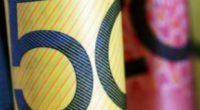
Private Health Insurance
The Medicare levy surcharge (MLS) is designed to reduce the demand on the public Medicare system.
The Medicare levy surcharge is payable if an individual has a taxable income of $90,000 or a family taxable income of $180,000 and does not have private patient hospital cover. However, a taxpayer does not need to pay the MLS if their family income exceeds $180,000 but their own income was less than $20,896.
The Medicare levy surcharge starts at 1% of taxable income and increases to 1.5% where an individual’s taxable income is $140,000 or for families $280,000.
Private patient hospital cover is provided by registered health insurers for hospital treatment provided in an Australian hospital or day hospital. General cover, commonly known as ‘extras’, is not private patient hospital cover. It covers items such as optical, dental, physiotherapy or chiropractic treatment. The cover must also have an excess of less than $500 for singles or $1,000 for families.
Most Australians with private health insurance currently receive a rebate from the Australian Government to help cover the cost of their premiums. The health insurance rebate is income tested and currently varies from 0% -37.09% of the premiums cost.
After allowing for the government rebate an individual can purchase basic private patient hospital cover for approximately $500 pa and a family $1,000 pa. This means a single person with a $100,000 taxable income and no private hospital cover who would normally be hit with a $1,000 Medicare levy surcharge can avoid it by spending $500 to take out a basic private patient hospital cover policy.





